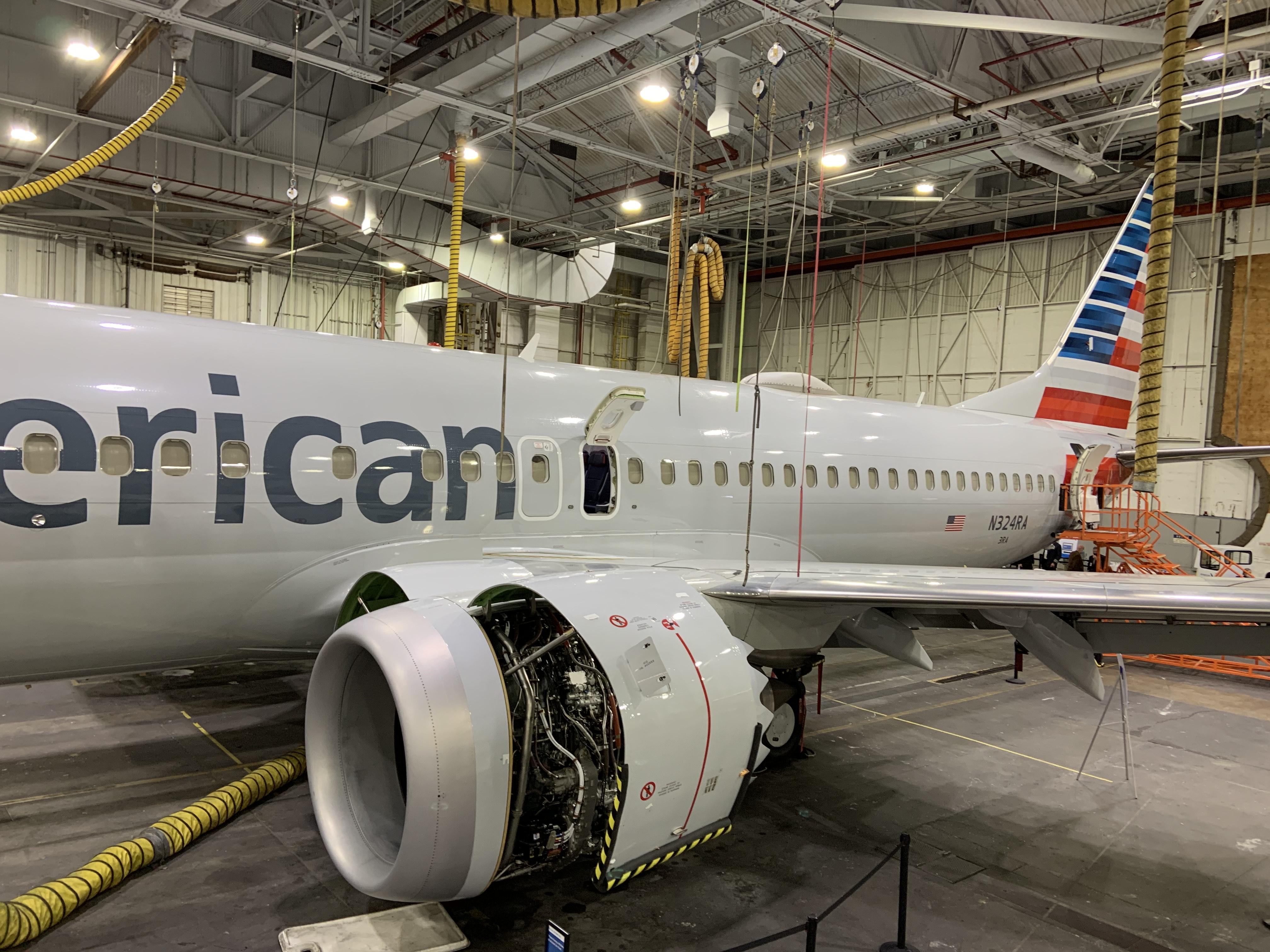
TULSA, Oklahoma--American Airlines is poised to restart Boeing 737 MAX revenue service on Dec. 29—less than six weeks after the FAA cleared the model’s return in part because the carrier kept its 24-aircraft fleet in what the airline dubbed “flyable storage.”
The airline’s newest 737-family aircraft have undergone about 64,000 labor hours of maintenance over the last 20 months since the global fleet was grounded, says Erik Olund, the airline’s managing director base maintenance.
Each 737 MAX aircraft undergoes maintenance every 10 days—including running the CFM Leap-1B engines, powering the electrical systems, rotating the tires, and operating the hydraulic system.
FAA-mandated steps for each aircraft's return to service includes modifying horizontal stabilizer control wiring that the FAA and Boeing deemed did not meet certification requirements for separation. The modifications, which began during the summer based on a Boeing service bulletin that FAA incorporated into the November AD, took about three days per aircraft, says Roger Steele, Boeing 737 assistant manager on duty at American’s Tulsa maintenance base.
American’s Tulsa shop has played a major role in keeping its MAXs as close to service-ready as possible during the model’s grounding. Fourteen of the airline’s 737 Max aircraft arrived in Tulsa—and stayed in Tulsa—from April. The other 10 were parked in Roswell, NM, for part of the time. None of American Airlines’ 24 737 Maxes went into deep aircraft storage.
Regulators grounded the 385-aircraft MAX fleet in March 2019 following two fatal accidents in five months. The accident’s investigations and related reviews of the newest 737 led regulators to require flight control computer software updates and new training for pilots. An FAA airworthiness directive (AD) published Nov. 20 finalized the required steps and cleared the way for airlines to begin updating the software. The software update takes about six hours—four hours for the software to upload and two to perform functional tests to make sure the systems updated and are working. American hopes to complete the software updates on its current MAX fleet in January 2021.
After the software update, each aircraft undergoes operational readiness, which requires six hours of ground tests and four to five hours of flight tests. Functional checks of each MAX’s two angle-of-attack sensors are also required as part of return-to-service work.
MAX-specific training for American's 737 pilots, including new, mandatory simulator sessions, began Dec. 2 and will last into early 2021.
American Airlines plans to add 10 MAX aircraft to its fleet this month. All of those aircraft will be AD-compliant; Boeing will modify the aircraft before American accepts them, says Olund. American Airlines will complete normal customer acceptance flights and ferry the aircraft to its Tulsa maintenance base, where Tech Ops will perform routine post-delivery modifications such as applying decals and adding interior amenities such as first-class cup holders, says Olund.
--with Sean Broderick





